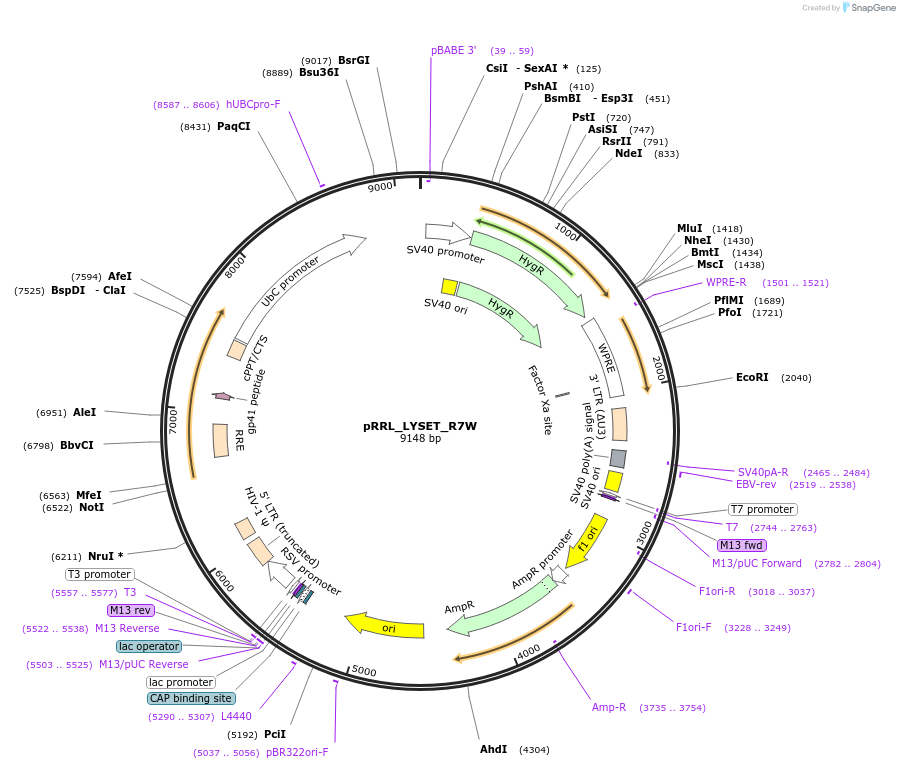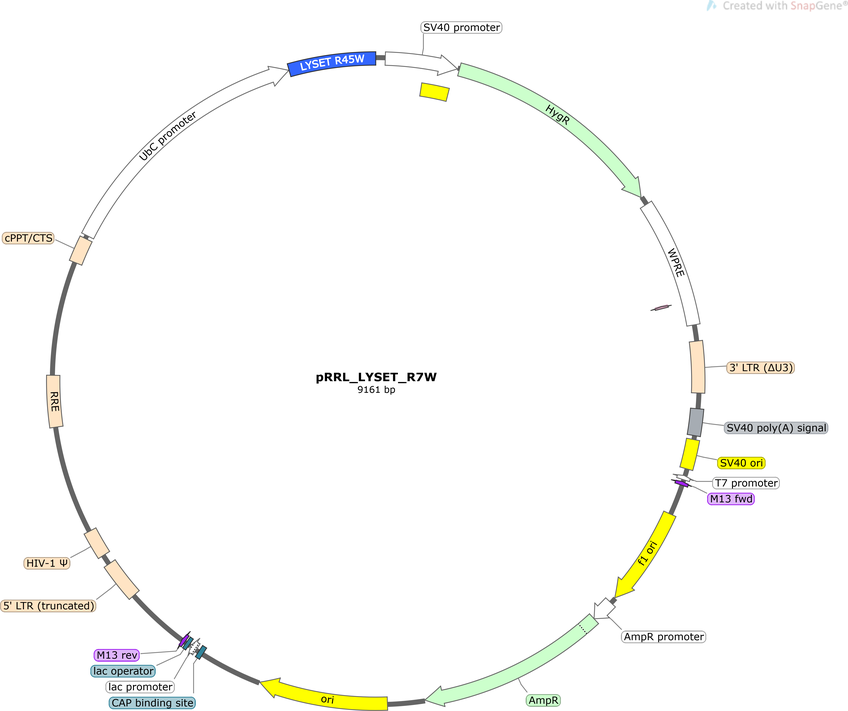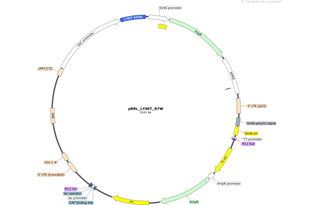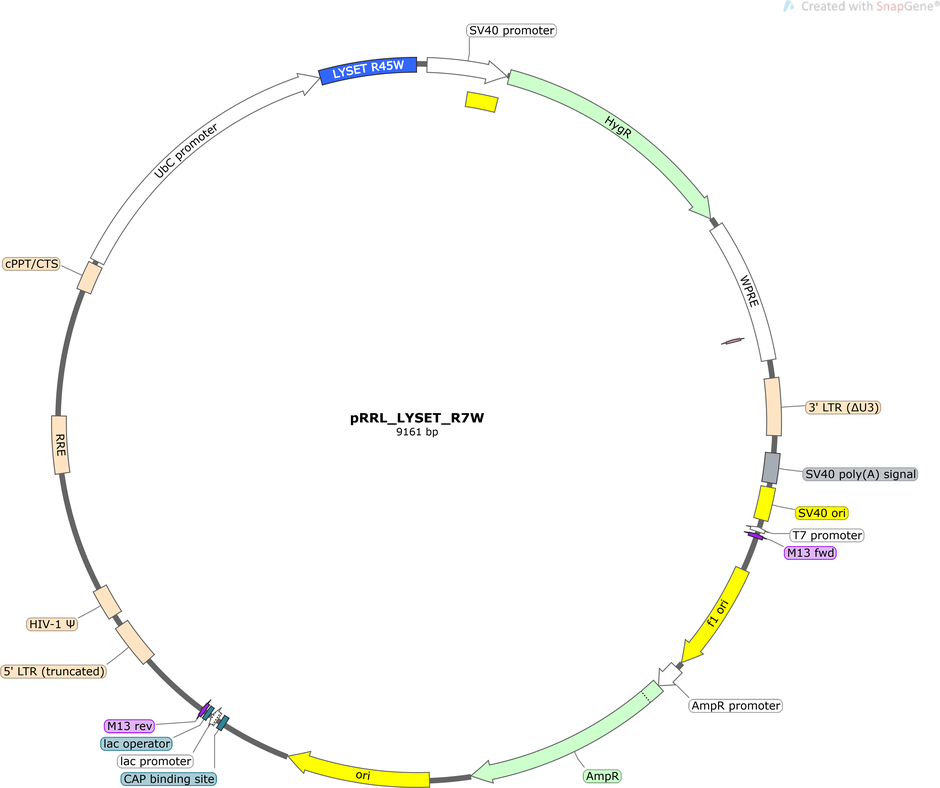pRRL_LYSET_R7W
(Plasmid
#246083)
-
PurposeStable expression of LYSET R7W (isoform 2; R45W in isoform 1)
-
Depositing Lab
-
Sequence Information
Ordering
| Item | Catalog # | Description | Quantity | Price (USD) | |
|---|---|---|---|---|---|
| Plasmid | 246083 | Standard format: Plasmid sent in bacteria as agar stab | 1 | $89 | |
Backbone
-
Vector backbonepRRL
- Backbone size w/o insert (bp) 8765
- Total vector size (bp) 9161
-
Vector typeMammalian Expression, Lentiviral
-
Selectable markersHygromycin
Growth in Bacteria
-
Bacterial Resistance(s)Ampicillin, 100 μg/mL
-
Growth Temperature37°C
-
Growth Strain(s)NEB Stable
-
Copy numberUnknown
Gene/Insert
-
Gene/Insert nameLYSET R7W
-
SpeciesH. sapiens (human)
-
Insert Size (bp)396
-
GenBank IDNM_015676.3
-
Entrez GeneLYSET (a.k.a. C14orf109, DMAN, GCAF, TMEM251)
- Promoter UBC
Cloning Information
- Cloning method Gibson Cloning
- 5′ sequencing primer CTTAAGTAGCTGAAGCTCCG
- 3′ sequencing primer GGGACTTTCCACACCCTAACTG
- (Common Sequencing Primers)
Terms and Licenses
-
Academic/Nonprofit Terms
-
Industry Terms
- Not Available to Industry
Trademarks:
- Zeocin® is an InvivoGen trademark.
These plasmids were created by your colleagues. Please acknowledge the Principal Investigator, cite the article in which the plasmids were described, and include Addgene in the Materials and Methods of your future publications.
-
For your Materials & Methods section:
pRRL_LYSET_R7W was a gift from Wilhelm Palm (Addgene plasmid # 246083 ; http://n2t.net/addgene:246083 ; RRID:Addgene_246083) -
For your References section:
Lysosomal enzyme trafficking factor LYSET enables nutritional usage of extracellular proteins. Pechincha C, Groessl S, Kalis R, de Almeida M, Zanotti A, Wittmann M, Schneider M, de Campos RP, Rieser S, Brandstetter M, Schleiffer A, Muller-Decker K, Helm D, Jabs S, Haselbach D, Lemberg MK, Zuber J, Palm W. Science. 2022 Oct 7;378(6615):eabn5637. doi: 10.1126/science.abn5637. Epub 2022 Oct 7. 10.1126/science.abn5637 PubMed 36074822







